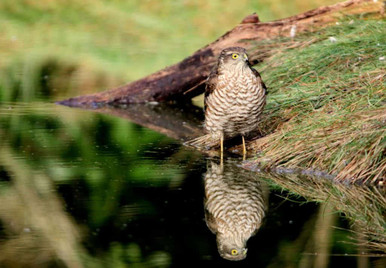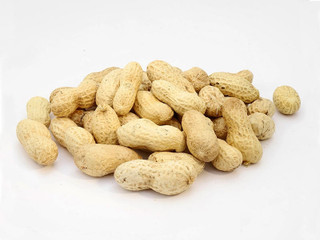The Kennedy Wild Bird Food Guide to the Sparrowhawk
Love it or hate it, the sparrowhawk is now a common visitor to parks across the UK. This hawk really does divide the bird feeding community, and those that love to watch songbirds in their garden have taken a strong disliking to the sparrowhawk due to its predatory instincts. Discover all there is to know about the sparrowhawk in our guide, including what it sounds like, looks like and what this bird of prey eats.What does a sparrowhawk look like?
The Eurasian sparrowhawk (also known by its scientific name, Accipiter nisus) is a small bird of prey from the hawk family. The male sparrowhawk is a blue/grey colour with an orange chest and long talons for hunting. The female sparrowhawk (similarly to juvenile sparrowhawks) are brown rather than blue/grey and have a brown striped chest as opposed to the male’s orange chest. Both male and female sparrowhawks have piercing yellow/orange eyes that make them easily identifiable. Fun fact: female sparrowhawks are bigger than their male counterparts. Females weigh around 185-342g, whereas males weigh anywhere between 110-196g.
Sparrowhawk vs goshawk: what’s the difference
The main difference between a sparrowhawk and a goshawk is their size. Goshawks are much bigger than the sparrowhawk and are said to be much more aggressive. A female sparrowhawk may be the same size as a male goshawk. If you’ve seen what could be either in your garden, it's likely to be a sparrowhawk as the goshawk isn't a frequent visitor to our gardens.The sparrowhawk’s diet
The sparrowhawk’s diet consists of small songbirds. Birds that feed out in the open, such as the house sparrow, are particularly vulnerable. A male sparrowhawk might catch a bird the size of a thrush, but the female sparrowhawk has been known to catch birds the size of a pigeon. If you’d like to preserve the population of the songbirds in your garden and prevent the sparrowhawk from preying on them, it’s best to provide safe feeding and nesting places for them by moving your feeders around regularly and spreading them around the garden rather than in one concentrated area. Don’t forget to grab some of the songbirds favourite treats, such as our mixed flavour suet pellets, to add to your feeders.What does a sparrowhawk sound like?
Listen to the clip below to hear the Eurasian sparrowhawk’s call and see if you’ve heard it before! Click here to listenThe sparrowhawk’s behaviour and habitat
In many parts of Europe, sparrowhawks are still shot. However, here in the UK, the population has been increasing rapidly and the sparrowhawk is now one of the most common birds of prey. They breed in extensive woodland and forest areas, nesting in the fork of trees near the trunk. Interestingly, the male sparrowhawk loses weight during breeding season as he feeds the female before she lays eggs. Sparrowhawks love to hunt in small woodland areas, which means your garden is likely the perfect hunting ground for them. They fly around 2-3km every day just to hunt and will soar above tree level before swooping down on smaller birds. Despite its predatory instinct, the sparrowhawk has many predators itself in the barn owl, northern goshawk and golden eagle to name just a few. If you spot a sparrowhawk in your area, don’t forget to log the sighting on our birdspotter map!










